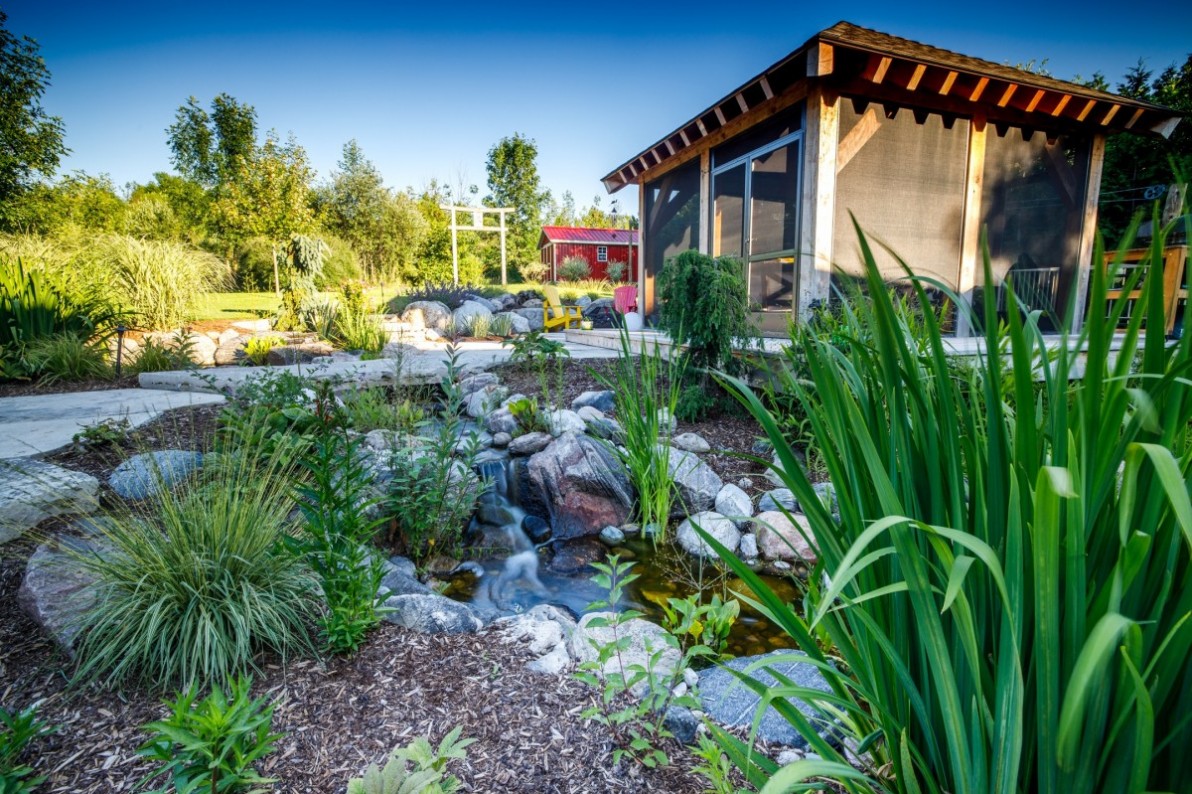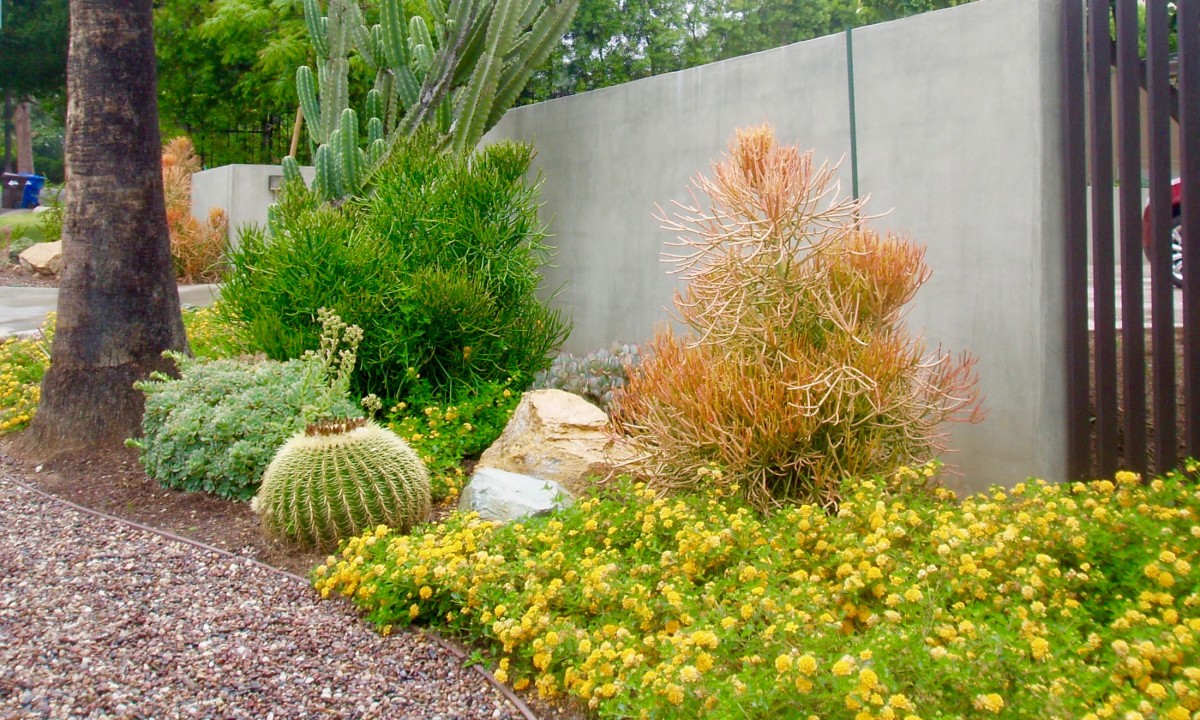The Facts About Landscapers Revealed
The Facts About Landscapers Revealed
Blog Article
Landscapers Fundamentals Explained
Table of ContentsAn Unbiased View of LandscapersAbout LandscapersThe Single Strategy To Use For Landscapers5 Easy Facts About Landscapers ExplainedHow Landscapers can Save You Time, Stress, and Money.Some Known Facts About Landscapers.
- A yard attribute where water is stood for by an accumulated rock product, typically a gravel or granite. These are most frequently found in modern and Japanese garden design.- A stone or natural flagstone patio area, course, or pathway built without a concrete base. The base would certainly be compacted crushed rock and the joints would certainly be an aggregate or walkable ground cover. - A rock retaining or cost-free standing wall developed without the use of mortar. A very experienced mason is required for a dry stack rock wall. Many wall surfaces in Rose city are not completely dry piled, even if they show up to be. - An underground structure that gather water and allows it to slow percolate into the soil around it.
Landscape layout that is suitable with a websites' atmosphere in both appearance and sustainability without unfavorable effects to the setting. Edging in the landscape is a line of demarcation that produces aesthetic interest in the yard by separating one section from an additional sector. This can be visual or practical, keeping one element (such as pea crushed rock) from getting mixed into an additional (like bark dust).
Locations can also sense of "room" provided by trees, various other plantings, fencings, or displays. The landscape near the access to a building. A tree, shrub or vine, educated to expand on a wall or fence right into a specific pattern. Particularly valuable for fruit trees, making it simple to collect the fruit and having mess.
Examine This Report on Landscapers

The element in a landscape layout or location in a landscape that is suggested to be most famous. The centerpiece can be a plant, boulder, statuary, gathering space, or various other landscape attribute. A design of gardens or garden elements that emphasize straight lines, best angles and circles. Shrubs or shrubs located in beds near the foundation of a home or other structure.

Landscapers - Questions
Reduced plants that are enabled or motivated to spread out over an area. Can refer to any "hard" garden elements consisting of statuary or rocks but many generally is used to refer to courses, patios, and walls - Landscapers.: Height distinction in between the level of water in a fish pond (or the level of the pump if it sits outside the fish pond) and the top electrical outlet of water which affects performance of the water pump in gph (gallons per hour).
Fencing boards that run horizontally, frequently used in modern or Japanese-inspired landscape Homepage styles. Correct usage of fictional lines can help the landscape feel linked to the home and various other components.
An even more unwinded yard controlled by rounded as opposed to straight bed lines and a less stiff framework. Conventional PNW landscapes are casual. A plant that spreads greater than preferred, or right into habitats where it does damage. Portland has a list of invasive plants that need to not be set up in landscapes due to the fact that they can infect woodlands or waterways and be tough to control.
The Basic Principles Of Landscapers
Can consist of head placements and insurance coverage, pipe sizing, GPM specifications, and materials needed to install this system. Certified specialist that designs landscapes, coached in engineering and architecture as well as in cultivation.
Landscape developers commonly have less education than Landscape Architects and are not licensed. A completed landscape layout, outlining all elements for the new landscape.
Utilizing many plantings of the exact same selection to fill up in an area in the landscape. This can lower maintenance and water use in description the garden.
A mix of concrete, sand, and water that is used in stone masonry for setting rocks and joints. A layer of compost or bark dust applied at the base of a plant. A mass growing of moss. A plant that was existing in a geographical place prior to people started transforming the landscape.
More About Landscapers
Exactly how the yard or a yard element is arranged in connection to an existing or new attribute or to an instructions. Keeping a yard without making use of chemical herbicides, chemicals, or fertilizers. Lawns that are not mowed however expanded in landscapes as perennials. This is a partly open sided relaxation or leisure location that adjoins a dwelling, made use of for amusing, outdoor eating and merely enjoying the exterior atmosphere.

Plants that give seasonal rate of interest and then pass away back in the wintertime. Cold season grass that is the most usual turf lawn in Portland, OR and the rest of the PNW.An open roofed framework over a patio or various other landscape feature.
The most common landscape crushed rock in the PNW. Location of the landscape created to handle rain water until it can saturate into the ground.
Framework made of timber, concrete, paving stones, blocks or other products for maintaining inclines and preventing too much disintegration. Narrow gutter. Developing a garden attribute consisting primarily of stones with growings that enhance and can prosper in the rocky environment. Lawn sprinkler head design that rotates a stream of water across a location.
Getting My Landscapers To Work

Report this page